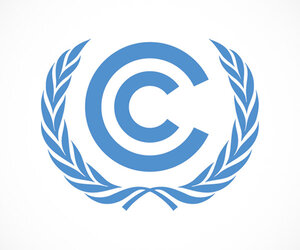Envisat in today’s world
In a world where science is pushing us to a new understanding of the earth system and the place of humanity and human activities in that system, Earth Observation satellites have a significant job to do.
Envisat and the pan European initiative: "Global Monitoring for Environment and Security"
In October 1998, the European Commission, the European Space Agency and European national space agencies proposed an initiative called Global Monitoring for Environment and Security (GMES). This initiative is a dedicated effort to put knowledge-supporting technologies (Earth Observation and information technologies) to the service of better environmental management and security. The continuous and co-ordinated acquisition of data envisaged in GMES is needed in a wide variety of contexts, examples include civil protection, treaty compliance monitoring and environmental control. Three major themes have been identified:
- global change
- environmental stress
- natural and man-made disasters.
Envisat is a critical element in ESA’s Earth-observation strategy, and so has the potential to contribute significantly to this new initiative.
In future, all of European and ESA’s Earth-observing satellites and its data archiving and distribution facilities will also play a role.
Based on a common concept elaborated with the European Commission and other partners, the Agency’s executive is developing a GMES dedicated Action plan for presentation to the Council of Ministers of its Member States.
For further information about GMES see: http://earth.esa.int/gmes
Envisat and international treaties
Several international conventions and treaties exist to protect the global environment.
In April this year, the European Space Agency invited tenders to evaluate the potential of current and future Earth-observing satellites "to provide treaty enforcement". As the largest ever space-based observatory, Envisat is one of the satellites with potential to contribute to treaty enforcement.
The Agency is particularly interested in case studies of how satellites (including Envisat’s instruments) can oversee compliance with four international agreements. These are:
The UN Framework Convention on Climate Change.
The Kyoto protocol to this convention calls for specific reductions to the emissions of six greenhouse gases: carbon dioxide; methane; nitrous oxide; hydrofluorocarbon; perfluorocarbon and hexafluoride.Satellites such as Envisat have the potential to monitor some, at least, of the Greenhouse gases.
http://www.unfccc.orgThe Ramsar Convention
Signatories to the Ramsar Convention agree to designate wetland sites and to manage and preserve the wetland ecology within these sites.
http://www.ramsar.orgUnited Nations Convention to Combat Desertification
This Convention adopted by the UN in 1994 aims to promote national and regional programmes to combat desertification and mitigate the effects of drought.
http://www.unccd.int/main.php-
The International Convention for the Prevention of Pollution from Ships (MARPOL)
This convention regulates the disposal of waste from ships.
http://www.epa.gov/owow/ocpp/marpol.html















 Germany
Germany
 Austria
Austria
 Belgium
Belgium
 Denmark
Denmark
 Spain
Spain
 Estonia
Estonia
 Finland
Finland
 France
France
 Greece
Greece
 Hungary
Hungary
 Ireland
Ireland
 Italy
Italy
 Luxembourg
Luxembourg
 Norway
Norway
 The Netherlands
The Netherlands
 Poland
Poland
 Portugal
Portugal
 Czechia
Czechia
 Romania
Romania
 United Kingdom
United Kingdom
 Slovenia
Slovenia
 Sweden
Sweden
 Switzerland
Switzerland

































